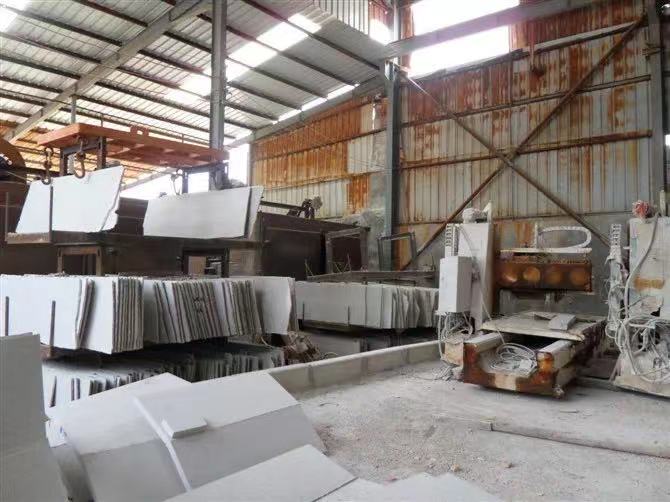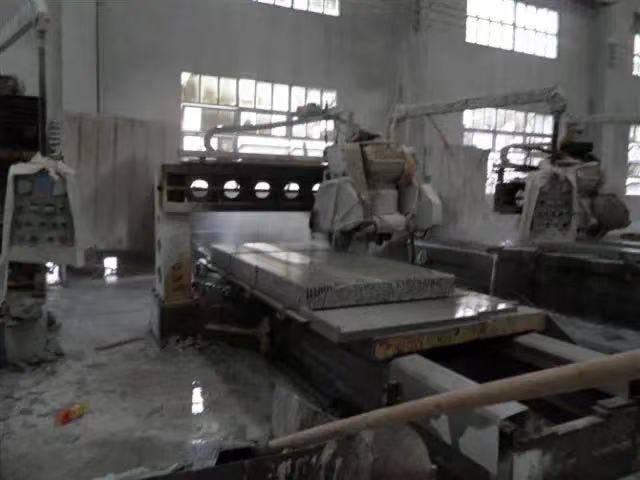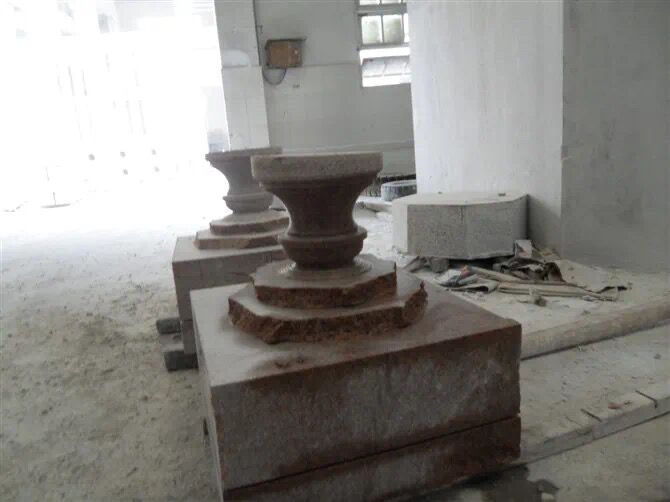
(1) Polished: The surface is very smooth, highly polished, with mirror effect and high gloss. granite, marble and limestone are usually polished and require different maintenance to maintain their luster.
(2) Honed: The surface is smooth, but low-polished, with diffuse reflection, no gloss, no mirror effect, and no light pollution.
(3) Rough-Rubbing: The surface is simply polished, and the machine-cut patterns formed during the cutting of the rough board can be polished. It feels like a rough matte finish.
(4) Machine-Cut: It is directly cut and formed by equipment such as gang saw or a bridge cutting machine. The surface is rough and has obvious machine-cut lines.
(5) Pickling: Use strong acid to corrode the surface of the stone to make it have small corrosion marks, and the appearance is more pristine than the polished surface. Most stones can be pickled, but marble and limestone are more common. Pickling is also a way to soften the luster of granite.
(6) Lychee (Bushhammered): The surface is rough and uneven. It uses a chisel or
bush hammer roller to dig out small holes densely on the surface. It has an effect that imitates the dripping of water droplets on the stone over the years.
(7) Pineapple (Picked): The surface is more uneven than litchi processing, just like the skin of a pineapple.
 (8) Chiselled:
(8) Chiselled: Also called longan noodles, it is chopped and knocked on the surface of the stone with an axe to form a very dense strip texture, which is somewhat like the effect of longan skin.
(9) Flamed: The surface is rough. This kind of surface is mainly used indoors, such as floor or as the veneer of commercial buildings, and the labor cost is relatively high.
(10) Cracking (Nature Split): commonly known as natural surface, its surface is rough, but not as rough as fire. This surface treatment is usually cut by hand or chiseled in a mine to expose the natural cracked surface of the stone.
(11) Tumbled: The surface is smooth or slightly rough, and the edges and corners are smooth and broken. There are several ways to achieve the tumbling effect. 20mm bricks can be rolled in the machine, 3cm bricks can also be rolled and then split into two bricks. Marble and limestone are the preferred materials for tumbling.
(12) Brushed: The surface is old. The treatment process is to scrub the surface of the stone to imitate the natural abrasion effect of the stone
.
(13) Water-jet: Use high-pressure water to directly impact the surface of the stone, strip the softer components, and form a unique decorative effect of the rough surface. stone
Material Research Institute stone5A
(14) Antique: Surface processing that imitates the antique effect of stone after a certain number of years of use. It is generally treated with antique abrasive brushes or antique water. Generally,
antique abrasive brushes are more cost-effective and more environmentally friendly.
 (15) Flamed+Brushed:
(15) Flamed+Brushed: Fire first and then use diamond antique brush make antique processing.
(16) Pickling+Brushed: Pickling and then use antique brush to do antique processing.
(17) Sandblasted: Use ordinary river sand or
diamond sandblasted roller instead of high-pressure water to wash the surface of the stone to form a smooth, sand-blasted decorative surface.
(18) Drawing (grooved) (Grooved): use
profile wheel to open a certain depth and width of grooves on the surface of the stone
(19) Mushroom: It is generally cut by hand, and the effect is similar to that of natural splitting, but the top surface of the stone is in the shape of a plateau with a depression around the middle protrusion.
For more information,Contact WWW.SANGTOOLS.COM


